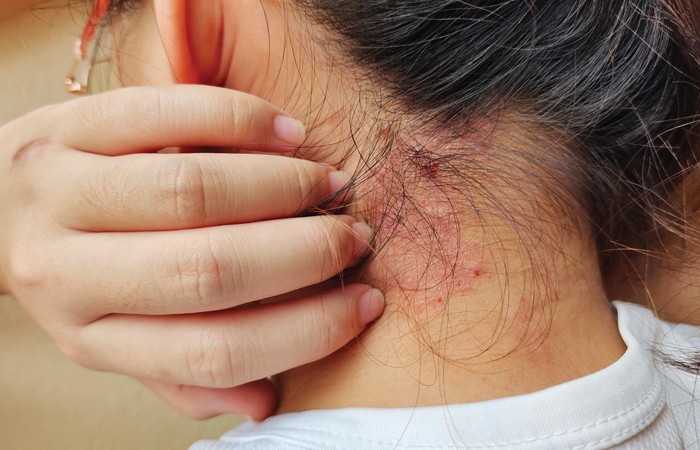Understanding the problem
Atopic eczema is the most common type of eczema. It can come and go, and sometimes customers will experience periods of flare-ups, where the condition worsens.
The frequency and severity of such periods vary, and people will often need support with how to manage the condition effectively throughout their lives, although childhood eczema can improve with age.
Having dry skin or eczema can have a significant impact on a person’s quality of life, as well as on their psychosocial wellbeing. Children may be affected by bullying, poor sleep quality, low self-esteem and absence from school, and adults can be equally as affected.
Being able to empathise with customers and reassure them about regular use of emollients, as well as recommending the most suitable products for their needs, is important.
There is a range of complications that pharmacy staff need to be aware of so that customers can be referred to the pharmacist where appropriate.
These include bacterial infection (signs of oozing and/or crusting), viral or fungal infections, and when the diagnosis is unclear.
Supporting customers
As there is no cure for eczema, it has to be managed using the following strategies:
- Using emollients frequently and liberally, as recommended by clinical guidelines. They should be used at all times, including when the eczema is under control, to maintain the skin’s barrier function
- Avoiding triggers (see panel)
- Minimising scratching, which can be difficult as scratching gives a sense of relief. However, it can also result in damage to the top layer of the skin, leading to further water loss and dryness, making eczema worse and increasing the risk of infection
- Applying topical corticosteroids during flare-ups or on a regular basis if recommended by a specialist or GP, and for 48 hours after the flare-up has been controlled.
If a customer needs further support, a GP may recommend other options such as the use of stronger products that are available on prescription, wet wrap therapy or antihistamines.
Trigger points
There is no single cause of atopic eczema, and many factors can play a part. For example, genetics have a role, with research showing that a child whose parents both have atopic eczema has a 60-80 per cent chance of having the condition themselves, and 30-50 per cent being affected if only one parent has eczema.
Children whose parents have the condition are also more likely to experience symptoms earlier and to have symptoms that are more severe.
In all cases, identifying and avoiding triggers can make a significant difference to symptoms:
- Food triggers – most commonly cow’s milk and eggs – can be associated with atopic eczema
- Hormonal changes can influence the severity of symptoms. For instance, premenstrual flare-ups occur in 30 per cent of women, with up to 50 per cent noticing a worsening during pregnancy
- Perfumed products such as soaps and bubble baths
- Temperature changes including particularly hot or cold weather
- Other triggers include stress and exposure to pets, house dust mites and pollen.

